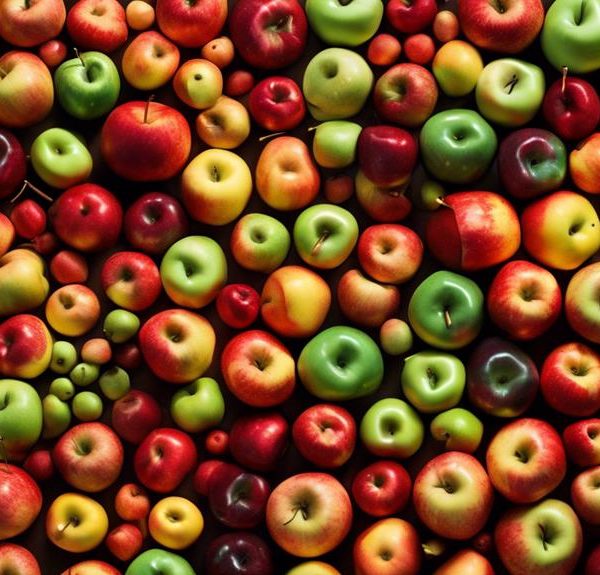Immerse yourself in the fascinating world of collective nouns, especially those used for snakes, and discover the intriguing historical and cultural influences behind them.

Collective Noun for Snakes
As you slither through the undergrowth of the English language, you’re likely to stumble upon some interesting collective nouns. Have you ever wondered what a group of snakes is called? It’s not as straightforward as you might think.
The terms used can vary greatly, influenced by historical context, culture, and even the peculiarities of the species in question. Before we shed our old skin of ignorance, why don’t we coil up and investigate this intriguing topic further?
Key Takeaways
- Collective nouns are unique terms used to denote a group or collection of specific things, animals, or people.
- Understanding collective nouns enhances vocabulary and language skills, providing language efficiency and specificity.
- Snakes have symbolized various concepts across different cultures, such as royalty, healing, and deceit.
- Popular collective nouns for snakes include ‘den’, ‘pit’, and ‘nest’, which capture the behavior and variety of snake species.
Understanding Collective Nouns

Let’s dive into the concept of collective nouns, which are unique terms used to denote a group or collection of specific things, animals, or people. You might already be familiar with some of the common ones like a herd of cows or a flock of birds. But it’s not just limited to that. You’ll find collective nouns for a wide range of things, from a gaggle of geese to an army of ants.
Collective nouns aren’t just a random assembly of words. They’re a fascinating linguistic phenomenon with roots in our linguistic history, especially in the English language. They’re a testament to our need for language efficiency and specificity. You wouldn’t say a group of stars, would you? You’d say a constellation. It’s more precise, more evocative.
Understanding collective nouns can enhance your vocabulary and take your language skills to a new level. It’s not just about learning new words, but also about understanding the logic behind them. So, next time you come across a collective noun, don’t just memorize it. Try to understand why it’s used in that context. That’s what makes language learning truly enriching.
Historical Context for Snakes

To understand the collective noun for snakes, we must first delve into their historical significance and cultural depictions. Throughout history, snakes have symbolized various concepts, often contradictory, across different cultures. They’ve been revered as sacred, feared as evil, and utilized as symbols of wisdom, fertility, or transformation.
Your exploration of this topic takes you to ancient Egypt, where snakes represented royalty and deity. You’d find the uraeus, a stylized, upright form of an Egyptian cobra, used as a symbol of sovereignty, royalty, deity, and divine authority.
In Greece, snakes were linked to healing, evident in the Rod of Asclepius, a serpent-entwined rod that remains a symbol of medicine today. Hindu mythology, too, holds snakes in high regard, often depicting them as powerful, divine beings.
Conversely, in Christian traditions, snakes are often associated with deceit and temptation, as in the biblical story of Adam and Eve.
These diverse cultural interpretations might’ve influenced the collective nouns used for snakes, such as a ‘den,’ ‘pit,’ or ‘nest,’ which reflect their various historical and symbolic associations. Understanding these historical contexts offers a deeper comprehension of the language we use to group these fascinating reptiles.
Popular Collective Nouns for Snakes

Delving into the realm of collective nouns, you’ll discover that snakes, intriguingly, are referred to by several terms, including a ‘den’, ‘pit’, or ‘nest’. These terms reflect not only the snake’s habitat but also their behavioral patterns.
A ‘den’ of snakes is a common term, mirroring the tendency of snakes to congregate in crevices, burrows, or under rocks, especially during hibernation. They seek out such dens for safety and warmth, often returning to the same location year after year.
Similarly, a ‘pit’ of snakes relates to the snake’s preference for hollows or depressions in the ground. This term is particularly apt for pit vipers, a family of venomous snakes that includes rattlesnakes and copperheads, known for their heat-sensing pits.
Lastly, ‘nest’ of snakes is used, reflecting the snake’s reproductive behavior. Female snakes will often create nests for their eggs or newborns, exhibiting a degree of maternal care uncommon in reptiles. However, not all snakes lay eggs; some bear live young, and in these cases, ‘nest’ refers to a gathering of young snakes.
These collective nouns capture the fascinating behavior and variety of snake species. Remember them, and you’ll enrich both your vocabulary and your understanding of these compelling creatures.
The Impact of Culture on Terminology

While you’ve now grasped the diversity of collective nouns for snakes, it’s fascinating to consider how cultural perspectives and language evolution have shaped these terms.
Historically, snakes have been symbolically linked to various concepts across cultures, from wisdom and rebirth to danger and deceit. This cultural symbolism has inevitably influenced the linguistic choices made in denominating groups of snakes.
For instance, the term ‘pit’ for a group of rattlesnakes can be traced back to Native American cultures, where the snake’s habitat was integral to the community’s understanding and labeling of this creature. Similarly, the collective noun ‘nest,’ commonly used in English, reflects the cultural perception of snakes as creatures that breed in close, communal clusters.
Language evolution also plays a significant role. As languages evolve, they adopt and adapt words from other languages, often preserving the cultural nuances associated with them. The word ‘den,’ used in reference to snakes, has Old English roots and connotes a hidden, secretive gathering, subtly reflecting the snake’s elusive nature.
Understanding these cultural and linguistic influences not only enriches your knowledge of collective nouns but also provides insight into the intricate interplay between language, culture, and perception.
Unusual Collective Nouns in Nature

Beyond the realm of snakes, you’ll find a wealth of unusual collective nouns in nature that reflect intricate ecological relationships and distinctive behavioral traits of various animal groups. For example, consider the ‘murder’ of crows, a term that captures their notorious and sometimes ominous social behavior. Similarly, an ‘exaltation’ of larks speaks to their uplifting, spiraling flight patterns and melodious songs.
In the marine world, you’ll encounter a ‘smack’ of jellyfish, offering a vivid image of their potential sting. A ‘bloat’ of hippopotamuses paints a picture of these heavy, rotund animals lazily floating in water bodies.
In the insect kingdom, a ‘plague’ of locusts perfectly describes their destructive swarm behavior, whereas a ‘knot’ of toads hints at their habit of huddling together during breeding season.
Each of these collective nouns, steeped in centuries of human observation, beautifully encapsulates the essence of the animal group it represents. They provide not just labels, but windows into the fascinating world of animal behavior, fostering a deeper understanding and appreciation of the natural world.
As a keen observer of nature, you’ll undoubtedly find these unusual collective nouns both intriguing and insightful.
Conclusion
So, you’ve journeyed through the fascinating world of collective nouns, delving into the historical context for snakes and exploring popular and unusual terms.
Culture greatly shapes these terminologies, revealing intriguing aspects of our relationship with nature. Remember, a ‘pit’, ‘nest’, or ‘den’ of snakes isn’t just about grouping; it’s a linguistic artifact echoing our ancestors’ interactions with these creatures.
Keep exploring and enrich your knowledge about the wonderfully complex language of collective nouns.





Sign up